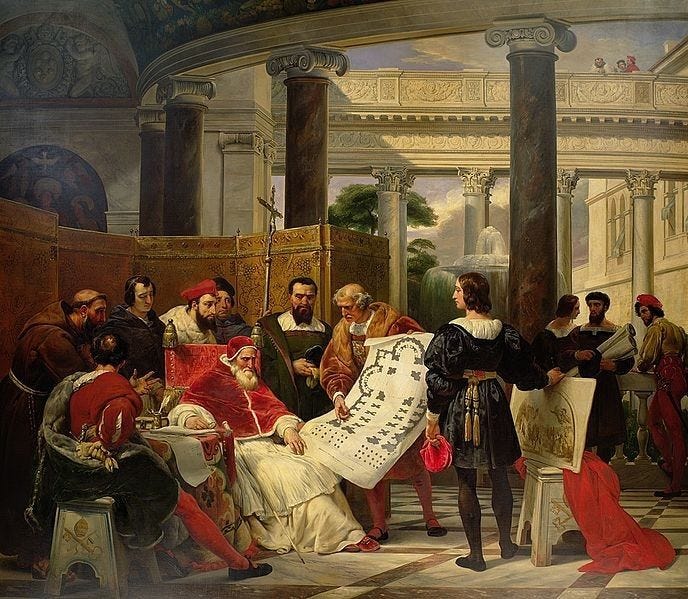Toxic Masculinity and the Making of Great Art
Pope Julius II, Michelangelo and the Sistine Chapel
“Il Papa Terrible” was the other name for Pope Julius II, so named because of his terrorising and belligerent personality. While religious men of his age can by no means be idolised as saintly people, engaging in affairs, lusts, greed, wrath and war, they nevertheless suffered least of all from at least one sin, which was of acedia. Sloth in other words, is the sin of doing too little and it is often masked with pacifism and being “a nice guy”. Whatever flaws we may describe in the religious leaders of Renaissance Rome, the results they produced in building a beautiful civilisation cannot be undervalued. In a world in which our religious leaders are squeaky clean and “very nice” we find that our civilizations are crumbling, overtaken by violent criminals and fraud, and everywhere blasphemy and ugliness is tolerated. Year after year, an average of 17000 people per day make pilgrimages to visit Rome and especially the Sistine Chapel to marvel and wonder at the gospel made available in visual form. If the Church is the bride of Christ, then Rome beautifies her.
Here is a description from Ross King’s book Michelangelo and the Pope’s ceiling:
“People had good reason to dread Julius. His violent rages in which he punched underlings or thrashed them with his stick were legendary. To stunned onlookers, he possessed an almost superhuman power to bend the world to his purpose.” And a Venetian ambassador wrote this about him: “It is virtually impossible to describe how strong and violent and difficult to manage he is. In body and soul he has the nature of a giant. Everything about him is on a magnified scale, both his undertakings and his passions.”
There are many conditions required to make great art, however, one underestimated and often overlooked condition is an indomitable and determined masculine leadership and patronage. There is both a dark and a light side to this kind of extreme personality. If Pope Julius II waged great terror, he also patronised and engineered great beauty. Needless to say, a personality such as Pope Julius II would not last long in our modern world that punishes political incorrectness and even the slightest impoliteness, but tolerates evil that pervades society not through personalities, but through systems. This essay is a summary of Pope Julius II’s exploits both dark and light, so that we may discuss to what extent the profits of “toxic masculinity” are necessary for the production of the good of society, and especially, of great art.


